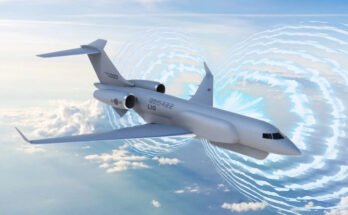by Dan Darling, International Military Markets Analyst, Forecast International.
Reports in the Indian media indicate that following months of intense negotiating over technical details, a work-share agreement for joint production of a fifth-generation fighter aircraft (FGFA) between India and Russia is now close at hand.
This long-pursued FGFA project – code-named Project 79L in the Indian Defence Ministry – dates back to an initial announcement on October 20, 2007, shortly after New Delhi and Moscow signed an Inter-Governmental Agreement exempting the program from normal procurement rules. Since then, it has largely stalled in the typical road-to-nowhere fashion of so many other floundering or doomed Indian defense projects.
The two countries signed a collaborative preliminary design contract worth $295 million in December 2010 (with the design work wrapped up in June 2013), but have been at loggerheads over such issues as cost, technology-sharing, and access to the Russian T-50 prototype (PAK-FA), as well as concerns over the engine type, weapons carriage system and other technical details.
Although plans called for the advanced fighter to fill a critical role in its combat aircraft complement, the Indian Air Force (IAF) grew increasingly disenchanted with the project. And, despite facing the prospect of a medium- and long-term combat airpower capacity shortage, the IAF decided in October 2012 to shrink its planned order of the aircraft from 214 to just 130-144 units. Ongoing pressures on the Capital Head portion of the defense budget (the allocation for funding equipment purchases and maintenance/upgrades) have made that decision appear more and more shrewd.
State aerospace giant Hindustan Aeronautics Ltd (HAL) has been equally frustrated over the FGFA. The Indian prime in the project’s industrial collaboration with Russia’s Sukhoi, HAL felt it was not slated for sufficient work share (reportedly just 15 percent) in an estimated $11 billion program, for which India was expected to foot half the bill.
While the strength of the IAF combat fleet remains far below its medium-term (2022) and long-term (2032) airpower goals to field 42 and 45 fighter squadrons, respectively, the need for the Indian government to move forward on the FGFA and other fighter projects becomes more and more pressing. Currently, the service operates an official figure of 32 squadrons. But with serviceability issues plaguing IAF fighter inventories, the actual operational total is closer to just 25 squadrons.
With the FGFA project foundering and the Medium Multi-Role Combat Aircraft (MMRCA) scrapped altogether, Prime Minister Narendra Modi sought to boost forward momentum on high-end fighter procurements by intervening directly with foreign counterparts. Rather than continue with the tedious MMRCA negotiations for 126 fighters (118 of which were to be built in India by HAL), an inter-government agreement was struck with France in April 2015 for the procurement of 36 off-the-shelf Rafale fighters.
In addition, the Defense Ministry placed fresh impetus on the FGFA project. Indian and Russian negotiators reached an agreement in principle in December 2015 under which both sides would contribute $3.7-$4 billion (with $1 billion put up front by each side) toward the program’s research and development across seven years. This work-share agreement is expected to yield technology dividends for India on the back end, and feature as many as 40 updated and improved elements over the Russian version. What’s more, the aircraft will be tailor-made to meet Indian requirements.
The hope is to ink the agreement no later than next month at the Indo-Russian summit talks in Goa. But, as with all such high-end, expensive (and industrially complex) Indian defense projects, come November we may still be hearing about an agreement finalization being “just around the corner” rather than officially signed.
Please feel free to use this content with Forecast International and analyst attributions, along with a link to the article. Contact Ray Peterson at +1 (203) 426-0800 or via email at ray.peterson@forecast1.com for additional analysis.
The Forecast International International Military Markets series examines the military capabilities, equipment requirements, and force structures inventories of 140 countries, with corresponding coverage of the political and economic trends shaping the defense market outlook for individual countries and regions.
For 50 years, Forecast International intelligence reports have been the aerospace and defense industry standard for accurate research, analysis, and projections. Our experienced analysts compile, evaluate, and present accurate data for decision makers. FI's market research reports offer concise analysis of individual programs and identify market opportunities. Each report includes a program overview, detailed statistics, recent developments and a competitive analysis, culminating in production forecasts spanning 10 or 15 years. Let our market intelligence reports be a key part of reducing uncertainties and mastering your specific market and its growth potential. Find out more at www.forecastinternational.com



